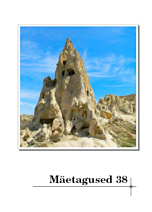Vaenunimedest eesti internetis
Dysphemisms on the Estonian Internet
Author(s): Liisi LainesteSubject(s): Customs / Folklore
Published by: Eesti Kirjandusmuuseum
Keywords: aggressive nicknames; aggression; ethnic slur; dysphemisms; web lore; ethnic humour
Summary/Abstract: Ethnic, religious or other group-based dysphemisms are the most obvious manifestations of prejudice, ethnocentrism, sometimes even indicating actual feelings of xenophobia. But they also mirror the present and past on interethnic relationships, as slurs and dysphemisms are part of a nation’s or a group’s reactions to culture contacts, for example to the ethnic diversification of society. Nicknames are affected by quite objective factors like the amount and density of population, migration, etc., becoming more aggressive in the context of insecurity, fast and unanticipated changes, or perceived/actual threat on the welfare of the group. The present study focuses on the use of aggressive nicknames in the Estonian web from the sociological and folkloristic perspective. The material covers the years 2000–2007 and features news comments posted on the Estonian online news portal www.delfi.ee from a selection of one-week periods from each year. The study describes the main objects of online flaming and the social background of target choice. The results show that online commenters play with the concepts of normal and abnormal, right and wrong, good and bad, while naming the “other”. They display their (sometimes radical) nationalism through juxtaposing themselves to “abnormal groups”. Temporal dynamics of ethnic and other hate speech in news comments show that the highest relative amount of slurs were used in 2003, regardless of the rise in national consciousness following the public disturbances in Estonia in April 2007. This trend is supported by the rise in other categories and by a sharp and direct confrontation to the “other” in Internet comments (but also the news themselves) during 2003. In the last years, commenters appear to use much less aggressive and straightforwardly offensive language to characterise groups other than their own. The trends show higher sensitivity and sense of responsibility, and the use of argument for the need of political correctness, possible censorship or even fear of punishment. The biggest number of instances of offensive slang are directed against Russians, while homosexualism and religion are also targets of dysphemisms. At the same time, ethnic slurs against Russians are proportionally much lower than those used against Gypsies, the Black or gays. Thus, as the number of comments in the case of a news story about Gypsys, for example, is much smaller than in the case of (very often provocative and emotional) news featuring Russians, the relative amount is somewhat distracting. The use and intensity of flaming also depends on many contextual cues: the news story and its construction, its main subjects, the identity or attitudes of the commenting persons, the social context of the news, etc.
Journal: Mäetagused. Hüperajakiri
- Issue Year: 2008
- Issue No: 38
- Page Range: 7-32
- Page Count: 26
- Language: Estonian

